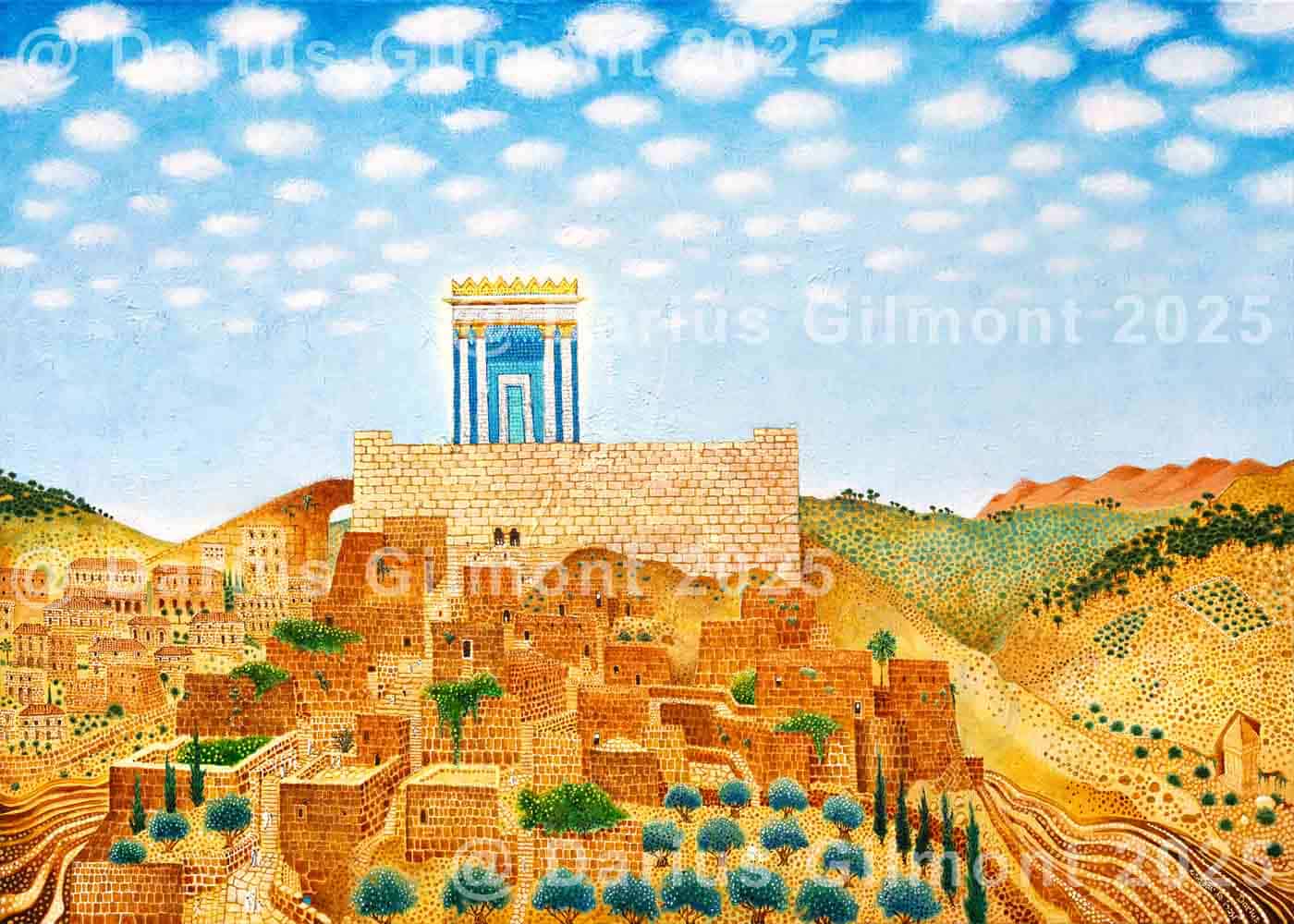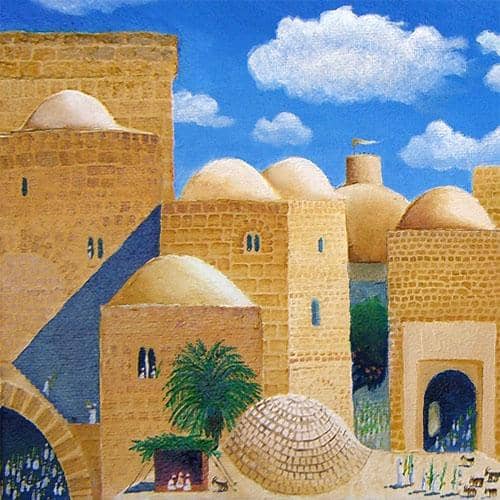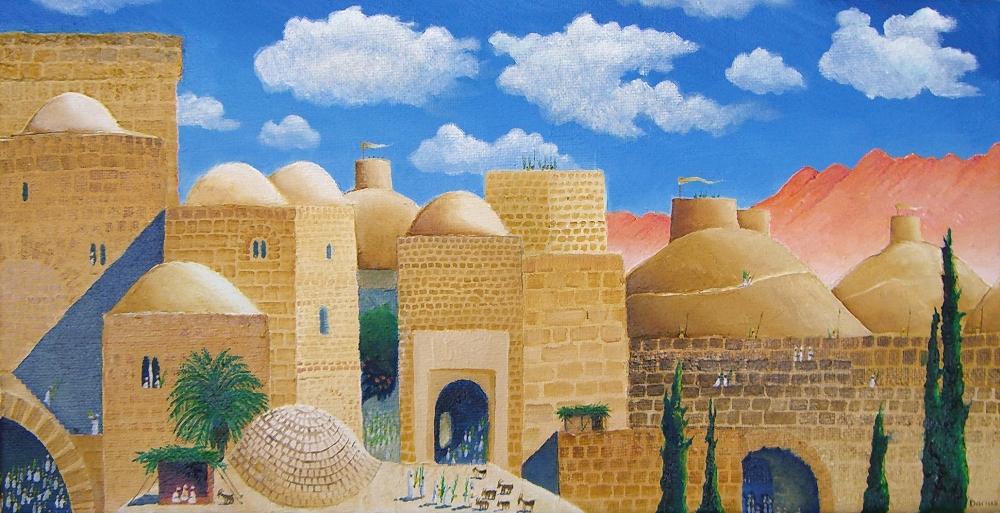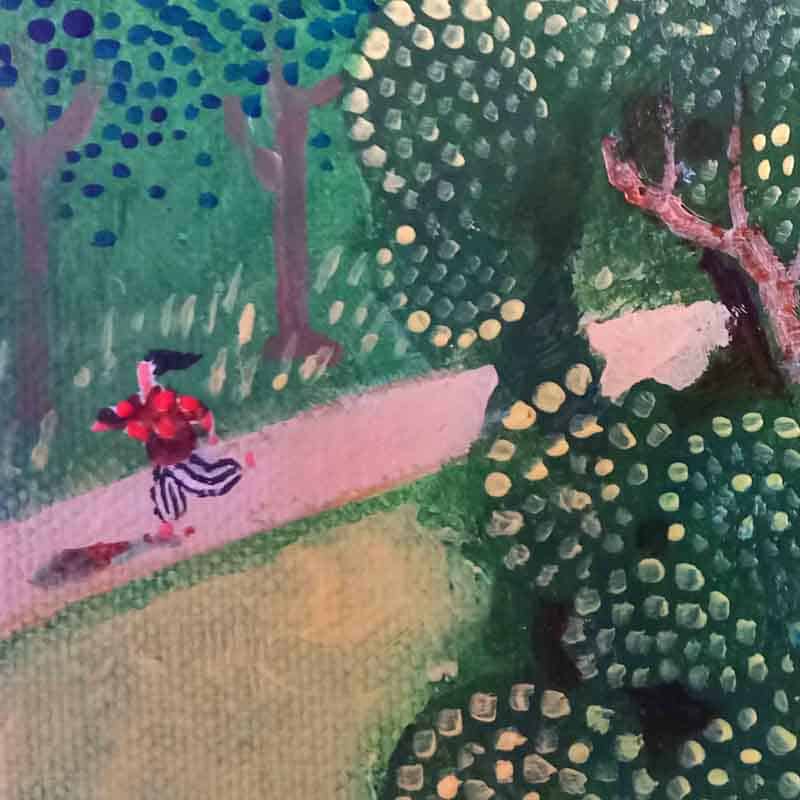
The Temple, the Jaguar & the Kung Fu Lesson
This is a post about three paintings: A view of the Second Temple in Jerusalem, a Jaguar E-type sports car,

I just rediscovered this painting, showing the festival of Succot in Jerusalem. I made this artwork a few years ago. It’s small and compact and rich in both colour and detail.
It shows the ancient city of Jerusalem, with the mountains of Edom in the distance, at the time of the great pilgrimage festival. Thousands would come to the Holy City for the festival of Tabernacles, which commemorates the people of Israel’s sojourn through the desert. For forty years they lived in huts as they travelled from Egypt to the Promised Land, and the festival of Succot is a hut-dwelling festival. In my painting, I’ve shown the city full of pilgrims in a procession. They are holding the “lulav” (palm branch, as part of the four species).
Here is my own Succah (blog-post and video from 2017), which we put up every year at Succot.

You can see more of my original art on my Original Paintings page.
This painting is also available as a print on canvas.
For a general description of the festival of Succot (=”Tabernacles”) you can go to Wikipedia.
And you can read more about Succot on the Chabad website.
For an inkling of the deeper spiritual significance attributed to the Four Species, here is an excerpt from the Gal Einai website which addresses the inner meaning of Jewish practice:
…..At an even deeper level of awareness, the heart (the etrog) directed in prayer upward, encapsulates the consciousness of “to Whom am I praying?” The eyes (the myrtle leaves), directed downward (toward reality) encapsulate the consciousness of “what am I praying for?” The moving lips (the willow leaves) of prayer encapsulate the consciousness of “who, in fact, is praying (myself or God Himself)?” The backbone (the ‘lulav’) of the one standing in silent devotion encapsulates the consciousness of his upright state of trust and determination that “my prayer will surely be answered.”

This is a post about three paintings: A view of the Second Temple in Jerusalem, a Jaguar E-type sports car,

I want to try to explain, from my point of view, what it feels like to be living here in Israel in these critical and dangerous times. One of the friends I’ve made through my art, who lives in Oregon, wrote me this: “………How are you in Israel REALLY doing?”